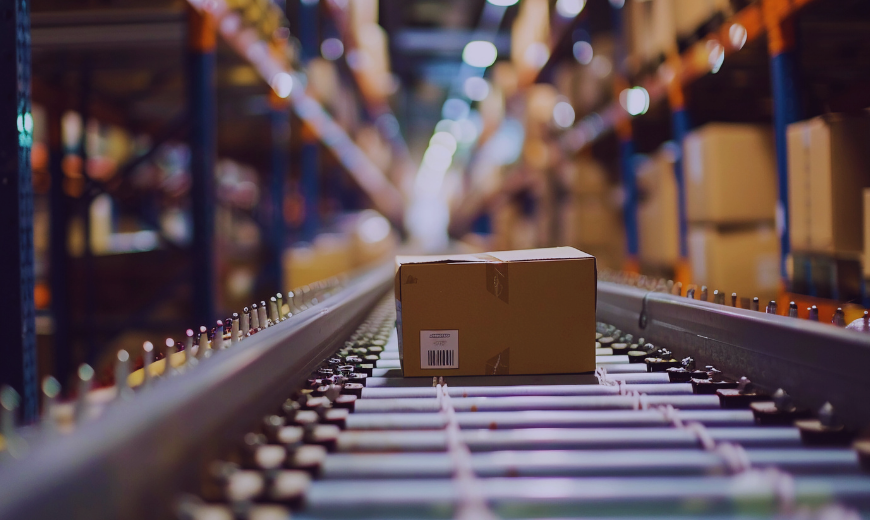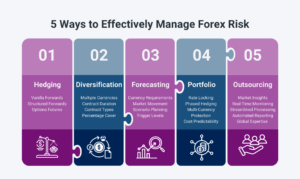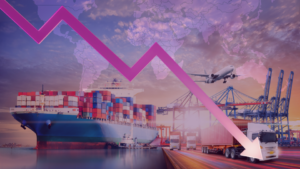Forex Management Insights
Sustainable Supply Chain Strategy Financial, Operational & Technological Resilience
Efficient supply chains aren’t built on logistics alone. True resilience comes from integrating financial risk management, coordinated inventory planning, and operational agility across every stage of global trade.
-
Nicky Strydom
- 3 minutes read

The past few years have exposed the fragility of global supply chains. From pandemic-related shutdowns to ongoing trade wars and geopolitical conflicts, exporters worldwide have been forced to rethink sourcing models, shipping routes, and financial planning. Disruption is no longer a rare event—it’s become part of the new normal in global trade.
With decades of experience supporting businesses trading across volatile global supply chains, we’ve identified the critical elements that drive sustainable supply chain strategy—and why building financial, operational, and technological resilience has never been more urgent.
Why Resilience is Now the Priority
Global trade has faced a perfect storm of disruptions. The COVID-19 pandemic triggered unprecedented supply chain blockages. The Russia-Ukraine conflict continues to affect commodity flows and trade routes. The Israel-Palestine conflict has added to Middle East tensions. Meanwhile, incidents like the Suez Canal blockage exposed how fragile some of the world’s most critical shipping lanes remain. On top of these, shifting tariff regimes and trade policy disputes have further complicated international commerce.
Exporters are now actively re-evaluating their sourcing strategies, with many shifting towards near-shoring or regional manufacturing models to reduce dependency on long-haul global shipping routes. This shift has come with trade-offs: greater inventory holdings, longer lead times, and increased working capital requirements.
Holding more inventory creates financial strain, but for many exporters, it’s become a necessary buffer against disruption.
Financial Risk Runs Through the Full Supply Chain
Foreign exchange (FX) exposure isn’t just a risk that surfaces at the point of payment. FX risk begins much earlier—at the moment a business commits to an international order. From there, exposure can continue for weeks or months as goods are produced, shipped, received, invoiced, and eventually settled.
Sharon Constançon, CEO of Valufin, highlights that FX risk runs across six key stages in the order-to-cash cycle:
- Purchase order placement
- Manufacturing or production lead time
- Shipping and logistics
- Receipt of goods and invoicing
- Credit terms and payment terms
- Final payment settlement
Many companies fail to fully quantify or actively manage FX exposure at these early stages, leaving themselves vulnerable to shifts in currency markets that can erode margins.
“Foreign exchange risk is not just when a payment is made — it runs through every stage: placing the order, shipping, delivery, invoicing, receipt of goods, credit terms, through to when you make the final payment to the supplier.” ~ Sharon Constançon, CEO, Valufin
Proactive Treasury Management Unlocks Hidden Savings
By actively managing FX exposure across all stages, businesses can reduce margin leakage and improve financial performance. Valufin’s experience shows that exporters who embed structured FX strategies often achieve cost savings of 2–10% on their export contracts.
Treasury teams must go beyond simply booking forward contracts. Effective treasury management integrates:
- Business strategy alignment
- Pricing model consistency
- Customer and supplier contract terms
- Hedging instruments matched to exposure timing
- Ongoing scenario analysis and sensitivity testing
Exporters who fail to proactively manage foreign exchange (FX) risks often find themselves reacting to market movements instead of controlling their financial outcomes. As Sharon states, “Even though you can’t control the currency market, you can control how your business manages foreign exchange risk.”
The Growing Role of Digitisation in Supply Chain Efficiency
While financial risks create one set of challenges, operational inefficiencies in trade processes create another. Many global trade workflows remain surprisingly reliant on paper-based documentation, leading to costly, slow, and error-prone transactions.
Digitising trade documentation can deliver dramatic improvements:
- Bills of lading, certificates of origin, compliance certificates—all handled digitally
- Lower processing costs
- Faster customs clearance
- Reduced fraud and human error
“Digitising trade documentation can reduce processing costs from £50–500 per shipment to £20 — that’s a 90% saving for exporters.” ~ Bruce Trebble, CEO, Trebble Trading Ltd.
The UK’s Electronic Trade Documents Act (EDTA) is helping establish legal certainty for digital trade documents, giving businesses confidence to adopt fully digital trade workflows.
Notably, SMEs often stand to benefit the most, as they are able to adopt digital platforms faster and with greater flexibility than larger corporations, which are often burdened by legacy systems.
Trusted Data is the Foundation for Safe AI Adoption
As digital trade platforms continue to grow, many exporters are exploring how artificial intelligence (AI) might transform global supply chain decision-making. However, AI’s power depends entirely on the quality of the data it consumes.
- Incomplete or inaccurate data increases AI risk
- Trusted, verified data sources are non-negotiable
- Digital trade platforms must be built on strong data integrity before layering AI-driven insights
Rather than rushing into AI adoption, businesses should first focus on building a trusted digital trade infrastructure to ensure data reliability across supply chain partners.
Modern Supply Chain Leadership Requires New Skills
Resilient supply chains aren’t built solely on process or technology—they’re built on people. Supply chain leaders now require a broader set of skills to navigate complexity:
- IQ: Technical and analytical competence
- EQ: Emotional intelligence to manage teams and relationships
- SQ: Social intelligence to collaborate across cultures and jurisdictions
- AQ: Adaptability quotient to respond to constant change
Leadership adaptability is becoming one of the strongest differentiators in global trade performance.
“The world has changed. Today’s supply chain leaders need not only IQ and EQ, but also social intelligence and adaptability intelligence to thrive.” ~ Linda Reddy, Global Supply Chain Executive, Nando’s Group Ltd.
Complexity Creates Opportunity for Agile Importers & Exporters
While complexity often feels like a threat, it’s also an opportunity for agile importers and exporters to gain an advantage. SMEs that embrace:
- Digital trade platforms
- Flexible sourcing models
- Proactive treasury risk management
- Modern leadership practices
…can often move faster than larger, more rigid competitors.
In an environment where resilience is currency, speed and adaptability become key competitive weapons.
Featured Podcast
Building resilient supply chains requires more than simply navigating logistics or financial transactions. This podcast explores how exporters can strengthen their global operations by aligning financial management, logistics execution, and digital transformation.
Building Sustainable Supply Chains Requires Integrated Action
Sustainable supply chains aren’t achieved by finance, operations, or technology working in isolation. Importers and Exporters who integrate treasury planning, operational logistics, and digital innovation build the resilience needed to thrive in volatile markets.
Valufin empowers businesses to strengthen supply chain resilience by aligning financial strategy, operational precision, and digital FX treasury solutions. Let’s turn complexity into your competitive advantage.
Looking to build a more resilient supply chain?
Partner with Valufin to align financial strategy, operational efficiency, and digital FX treasury solutions. Get started today.












